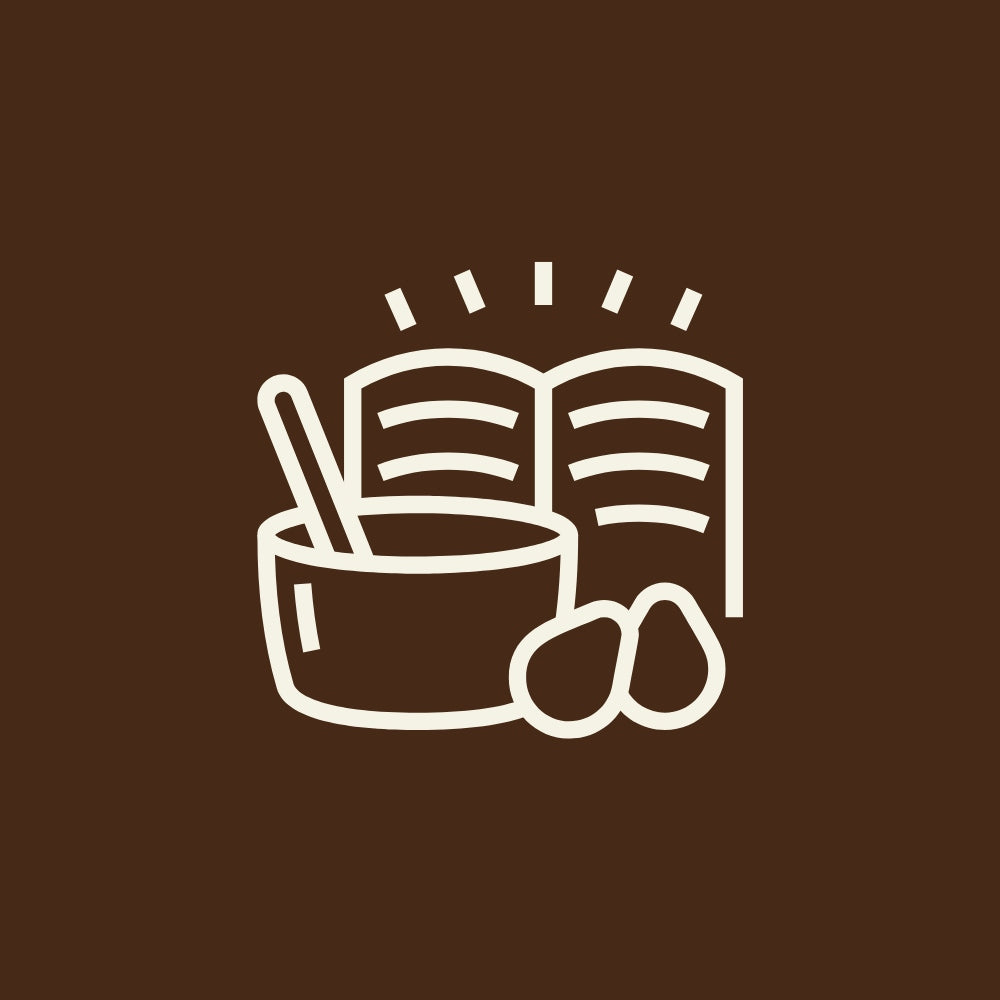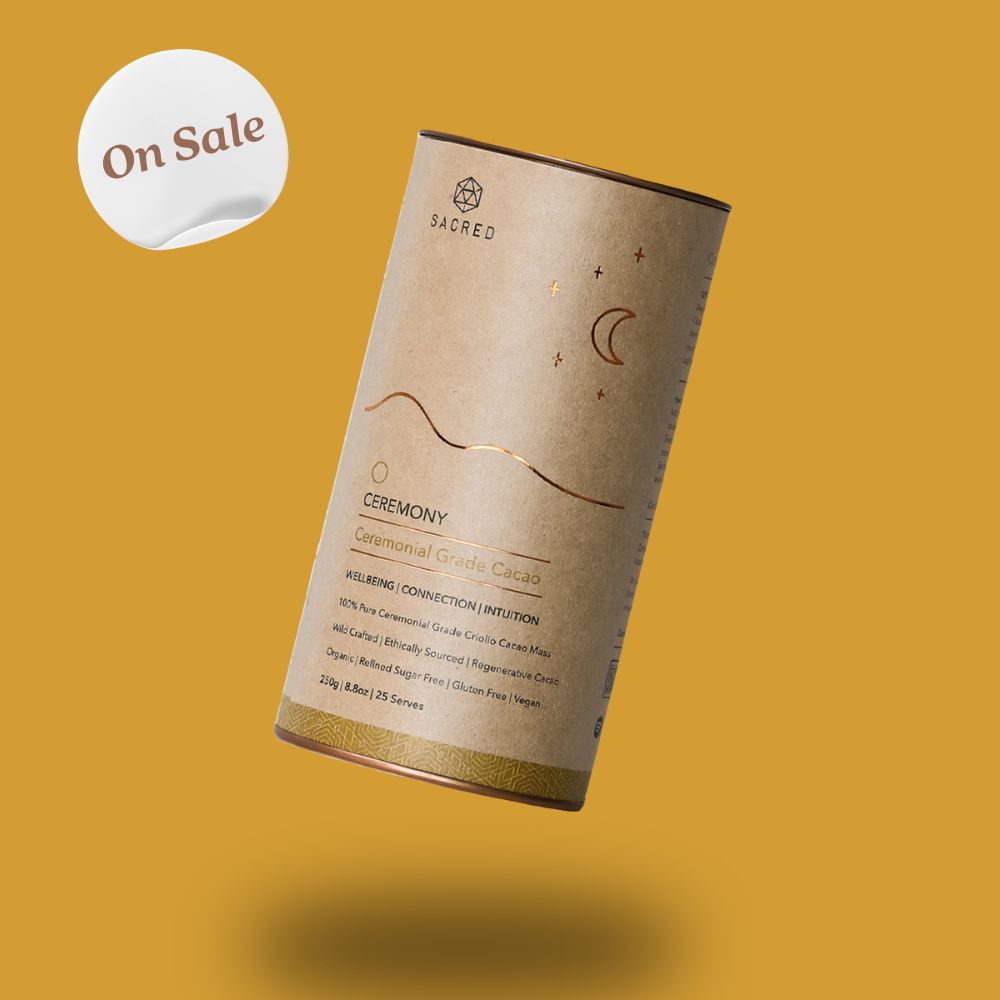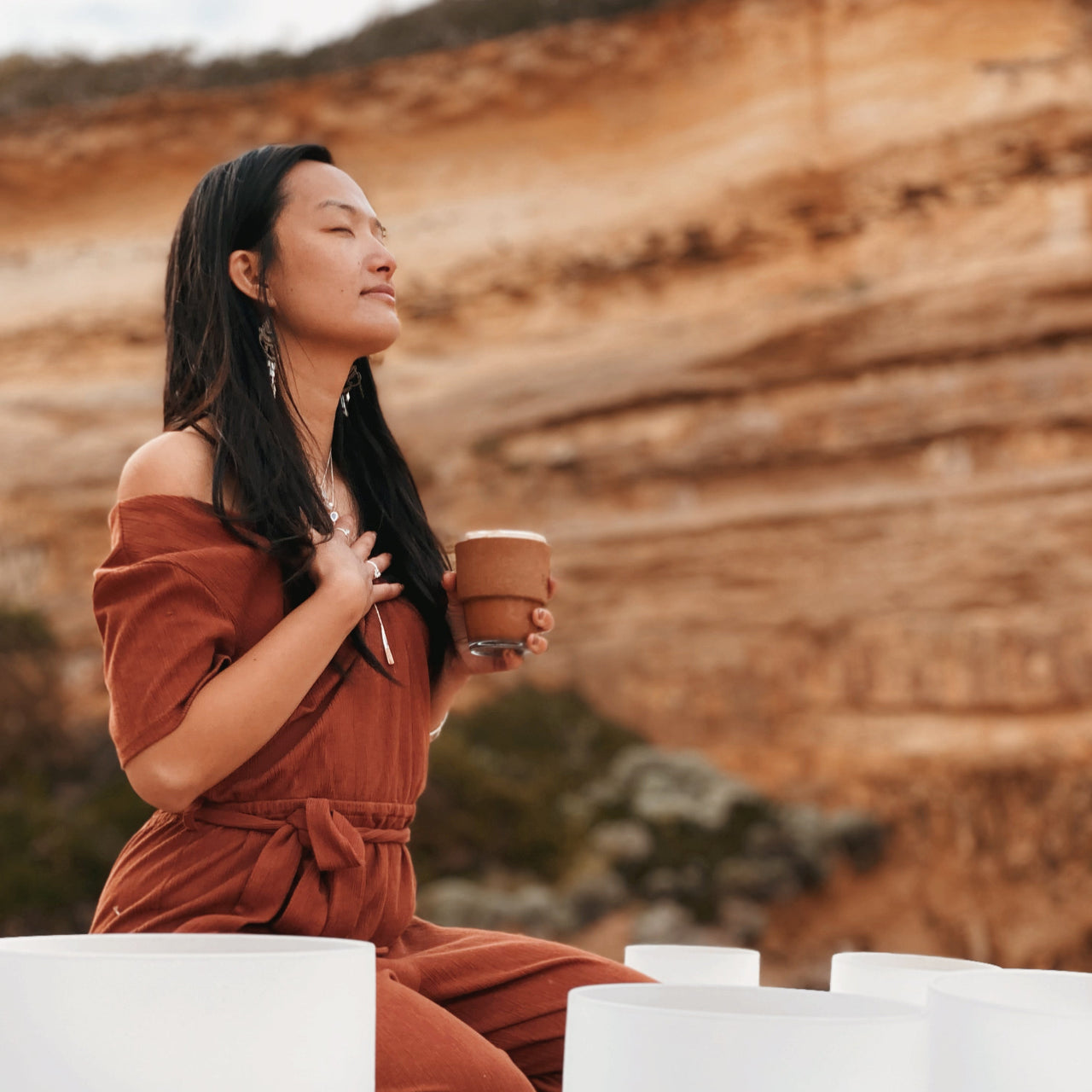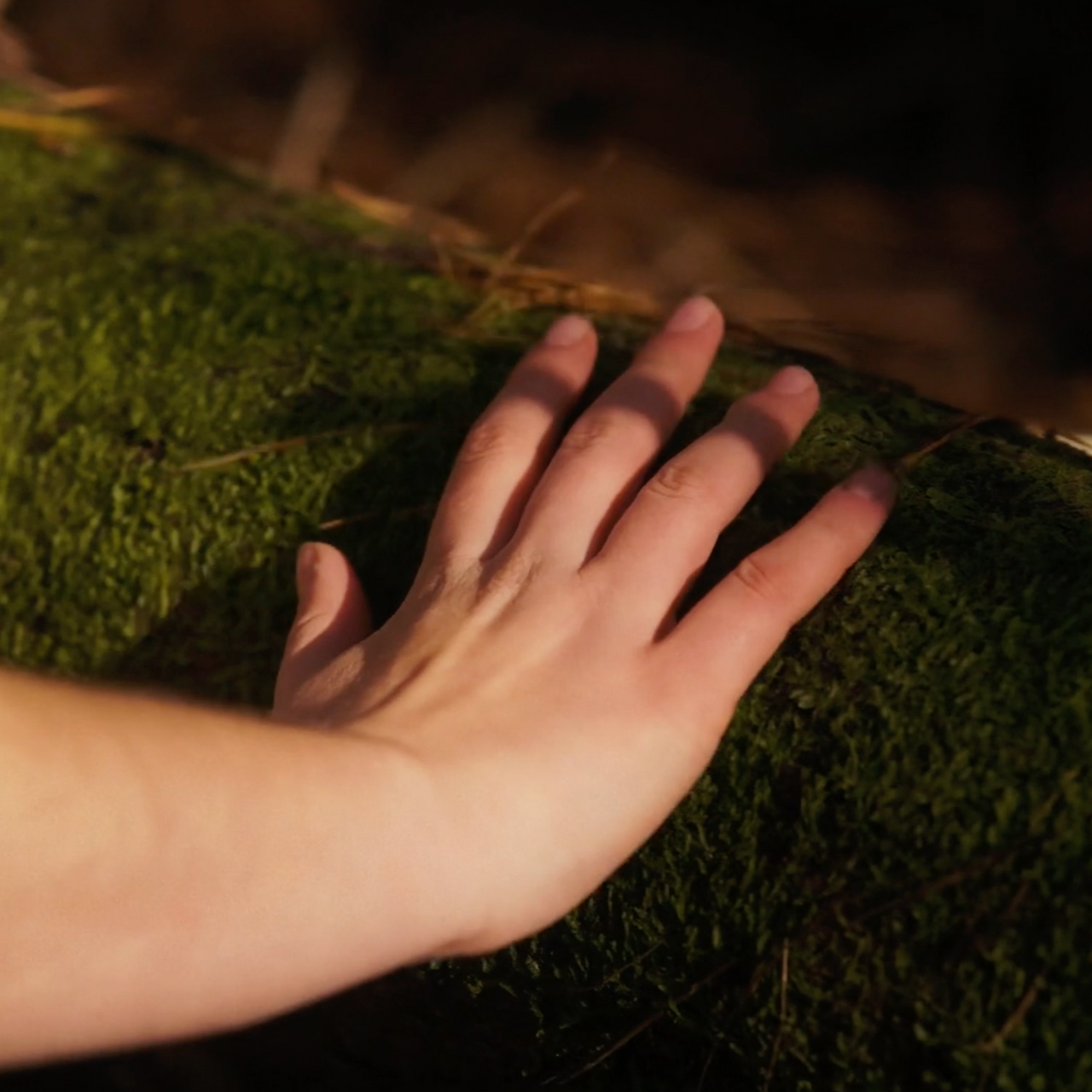
There’s a moment that always stays with me. I was sitting on woven mats in a longhouse by the Ene River, listening to an Ashaninka elder speak about the forest. His words, carried through translation, weren’t just about trees or rivers. They were about relationship—how every cacao pod, every bird call, every rustle of the jungle was part of their family. When I sipped the cacao they had prepared, I realised I wasn’t just drinking a beverage. I was tasting the Amazon itself: rich, layered, alive.
That memory comes back every time I share cacao in ceremony here in Melbourne. While our cool winters call for warming rituals, their hot and humid rainforest nurtures the very trees that make this heart-opening medicine possible. It’s a bridge across continents—one that carries flavour, culture, and story.
Who Are The Ashaninka And Why Does Cacao Matter?
The Ashaninka are one of the largest Indigenous groups in the Amazon, living mainly in Peru but also across the border in Brazil. Their story is one of survival and resilience. They’ve resisted colonisation, defended their territories during years of civil conflict, and now face new pressures from illegal logging and deforestation.
In the midst of this, cacao has become both a protector and a provider. For the Ashaninka, tending wild-crafted cacao isn’t just farming—it’s a way to keep their forest standing. Each tree cultivated under the canopy is a quiet act of defiance against destruction.
I remember one Ashaninka woman explaining how cacao helps them hold their ground: “If we can show the forest gives us life, we don’t need to cut it down.” Her words struck me deeply. They reminded me of conversations I’ve had with farmers in northern Victoria, who’ve shifted from water-hungry crops to more sustainable practices during drought years. Different landscapes, same principle: adapt, protect, and live in balance.
Cacao As A Path To Economic Independence
Beyond its spiritual and ecological role, cacao has become a lifeline for Ashaninka families. It helps pay for medicine, books, and school uniforms. One farmer I met shared how selling a few sacks of fermented cacao beans meant his daughter could continue her studies in the nearest town. That’s no small thing when education can be the difference between opportunity and hardship.
To understand its importance, picture this: without cacao, many families might have little choice but to rely on exploitative logging contracts or migrate away from their land. With cacao, they have a steady, sustainable income that grows from the very soil they protect.
It’s not unlike the conversations happening here in Australia about regenerative agriculture. Farmers know that short-term profit at the expense of soil health is a recipe for disaster. The Ashaninka approach—growing cacao within the living forest rather than clearing it—offers a glimpse of how sustainability and survival go hand in hand.
What Makes Ashaninka Cacao “Wild-Crafted”?
When you walk through an Ashaninka cacao grove, it doesn’t feel like a farm at all. The forest hums with life—macaws overhead, vines twisting down, insects buzzing. The cacao trees blend seamlessly into this living system, tucked beneath the canopy where they’ve grown for centuries. This is what “wild-crafted” means: cacao cultivated within the rainforest itself, not in rows of cleared land.
This approach is known as agroforestry. Instead of chopping down the jungle to plant monocultures, the Ashaninka work with the ecosystem. Fallen leaves enrich the soil, towering trees provide shade, and the diversity of plants protects against disease. It’s farming that looks less like conquest and more like co-existence.
I’ve seen the other side of agriculture too—vast cleared fields in Queensland where the heat bounces off bare soil. Standing in those spaces, it’s hard to imagine cacao thriving. But under the Amazonian canopy, the crop is at home. By keeping the forest intact, the Ashaninka not only grow cacao, they safeguard biodiversity and store carbon, making their farming part of the solution to climate change.
Organic And Hand-Harvested Traditions
Wild-crafted cacao is as pure as it gets. No pesticides, no chemical fertilisers, no machines stripping the land bare. The soil is rich with natural nutrients, and the pods are left to ripen fully on the tree. When the time is right, the Ashaninka harvest each pod by hand, often with children helping to carry baskets back to their homes.
The real art begins after harvest. Women in the community oversee fermentation—a process that takes patience and instinct. They pile the beans into wooden boxes or banana leaves, covering them so natural yeasts can work their magic. Over days, the beans heat and transform, developing the complex flavours that will later bloom in a cup. Once fermented, they’re dried under the sun, turned carefully until they reach the perfect balance.
It’s a method that hasn’t changed much over generations, and for good reason. Speeding up fermentation with chemicals or artificial heat might boost output, but it strips away depth of flavour. The Ashaninka way is slower, but it respects the bean—and you can taste the difference.
Wild-Crafted Vs Conventional Cacao: A Quick Comparison
|
Aspect |
Ashaninka Wild-Crafted Cacao |
Conventional Industrial Cacao |
|
Growing method |
Agroforestry under rainforest canopy |
Monoculture, cleared land |
|
Chemicals used |
None (organic, natural soils) |
Often pesticides, herbicides, fertilisers |
|
Harvesting |
Hand-picked when pods fully ripe |
Machine or bulk harvesting |
|
Fermentation & drying |
Traditional, slow, sun-dried |
Often accelerated with chemicals/machines |
|
Impact on environment |
Protects biodiversity, prevents deforestation |
Contributes to deforestation, soil loss |
When I share this comparison in workshops here in Melbourne, people are often surprised. They’re used to thinking of cacao as a single product—chocolate bars on a supermarket shelf. But once you understand the difference between wild-crafted and industrial cacao, it’s like tasting fresh-baked sourdough after a lifetime of sliced white bread. One holds culture and care, the other efficiency and scale.

Tasting The Amazon: The Unique Flavour Of Ashaninka Cacao
Rare Criollo Variety Preserved In The Jungle
Most cacao on the global market today comes from hybrid strains designed for yield and disease resistance. They produce plenty of beans, but the flavour often leans flat and bitter. The Ashaninka, by contrast, have chosen to preserve the rare Criollo variety—one of the oldest and most prized strains in the world. Criollo is delicate, harder to cultivate, but renowned for its depth of flavour.
I remember the first time I tried a pure Criollo brew offered by an Ashaninka elder. It was nothing like the sweetened cocoa I’d grown up with. The taste unfolded slowly—bright at first, then earthy, then finishing with a soft floral note. It’s the sort of complexity you’d expect from a fine wine rather than a hot drink.
By cultivating Criollo, the Ashaninka aren’t just farming; they’re guardians of genetic diversity. Each pod carries centuries of history, linking today’s drinkers to an ancient lineage of rainforest cacao.
A Complex And Nuanced Flavour Experience
Ashaninka cacao is often described in tasting notes as fruity, floral, and nutty, with just the right hint of bitterness. Think citrus zest meeting dark honey, or caramelised nuts with a touch of wildflower. The terroir of the Amazon—humid air, rich soils, and shaded forest canopy—seeps into the bean, shaping its flavour as surely as the land shapes a grape in wine-making.
When I share this cacao in ceremony circles in Melbourne, I often ask people to slow down and notice the layers. One person might taste dried apricot; another might swear there’s a touch of roasted coffee. This variation is part of the magic: the Amazon speaks differently to every palate.
If you’d like to try this yourself, here’s a simple tasting ritual I often guide:
Cacao Tasting Checklist
- Preparation: Brew a cup of pure, unsweetened cacao. Keep it simple—no sugar or milk.
- First Sip: Hold the cup close. Inhale deeply and notice the aromas—earth, fruit, maybe even a floral lift.
- Slow Drinking: Take a small sip and let it rest on your tongue before swallowing. Pay attention to how the flavour shifts.
- Layer Notes: Write down what you taste. Is it citrusy? Nutty? Sweet like dark honey?
- Final Reflection: Notice how your body feels after drinking. Does the bitterness wake you up? Does the warmth soften your chest?
It’s these subtleties that set wild-crafted Ashaninka cacao apart. You’re not just drinking for energy—you’re drinking to taste the Amazon itself.

The Cultural And Spiritual Significance Of Amazonian Cacao
From Ceremonial Drink To Sacred Medicine
For the Ashaninka, cacao is more than an export crop. Long before it was traded to distant markets, it was part of daily and ritual life. Traditionally, they prepared a drink not from the roasted beans we’re familiar with, but from the sweet, fermented pulp surrounding them. Shared in gatherings, it carried both nourishment and community.
I was once offered a calabash bowl of this pulp drink in a riverside village. It was tangy, almost like tropical kombucha, and the atmosphere was as important as the taste—laughter, storytelling, and children weaving between hammocks. It reminded me of how, back home in Melbourne, a cup of cacao in ceremony can weave people together in the same way, creating a connection that lingers long after the drink is finished.
The Ashaninka also draw medicine from the cacao tree itself. Bark infusions are used for stomach ailments, and the fruit is believed to support strength and vitality. This living pharmacy of the rainforest underpins their relationship with the plant, making it not just food but a healer.
And of course, cacao has always carried a sacred title. Its scientific name, Theobroma cacao, means “food of the gods.” While that name came from Mesoamerican traditions, the reverence echoes across Indigenous cultures of the Americas. To sip cacao with that awareness is to participate in a lineage that stretches back thousands of years.
Kemetsa Asaike: Good Living Through Cacao
The Ashaninka way of life is shaped by a philosophy known as Kemetsa Asaike, often translated as “Good Living.” At its heart, it means living in harmony with nature, honouring culture, and ensuring self-determination for future generations. Sustainable cacao farming is more than an economic tool—it’s an expression of this worldview.
Here’s how cacao supports Kemetsa Asaike in practice:
- Harmony with Nature: Growing cacao within the forest protects biodiversity and prevents deforestation.
- Cultural Continuity: Harvesting, fermenting, and sharing cacao reinforces traditions passed down through families.
- Self-Determination: Income from cacao allows the Ashaninka to fund schools, healthcare, and governance without depending on outsiders.
I often think of this when guiding cacao circles here in Australia. Participants come seeking clarity, connection, or grounding. For the Ashaninka, the practice is lived daily: cacao is literally the ground they stand on, the lifeline that lets them remain rooted in their ancestral land.
When someone in Melbourne sips wild-crafted cacao, they’re tasting more than flavour—they’re tasting resilience, culture, and a people’s commitment to “Good Living.” It’s a quiet reminder that every cup carries a story bigger than ourselves.
Ashaninka wild-crafted cacao is more than an ingredient—it is a story of the Amazon told through taste, tradition, and resilience. Every cup connects us to people who have safeguarded their rainforest home for generations, using cacao not just for income but as a cultural and spiritual anchor. By choosing cacao that honours its source, we don’t just experience a remarkable flavour—we participate in protecting biodiversity, supporting Indigenous sovereignty, and ensuring that the Amazon continues to breathe.
Here in Australia, where conversations about sustainability are growing louder, embracing cacao from the Ashaninka is a way to align daily rituals with deeper values. It’s a reminder that what we drink can be a bridge: from jungle to city, from heritage to future, from one heart to another.
















